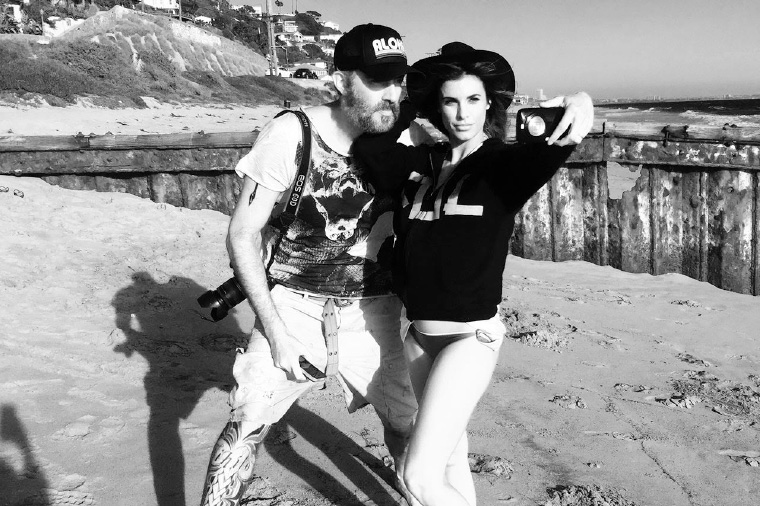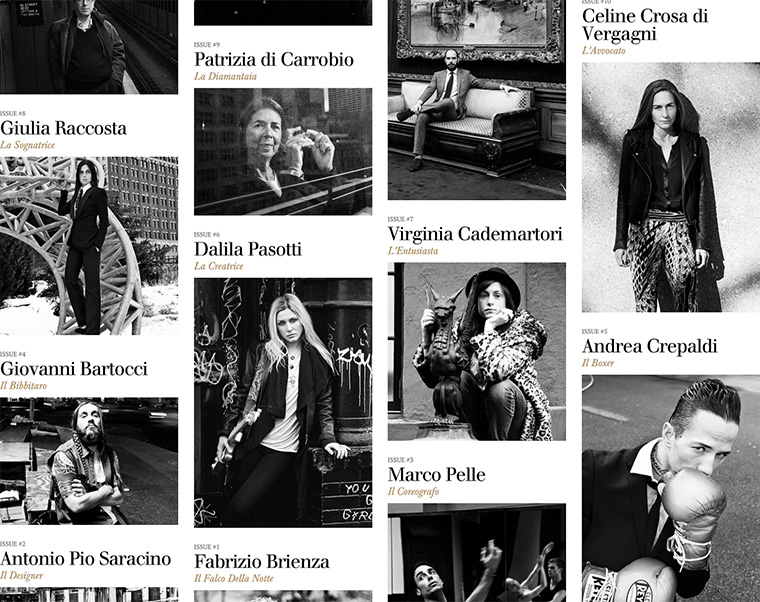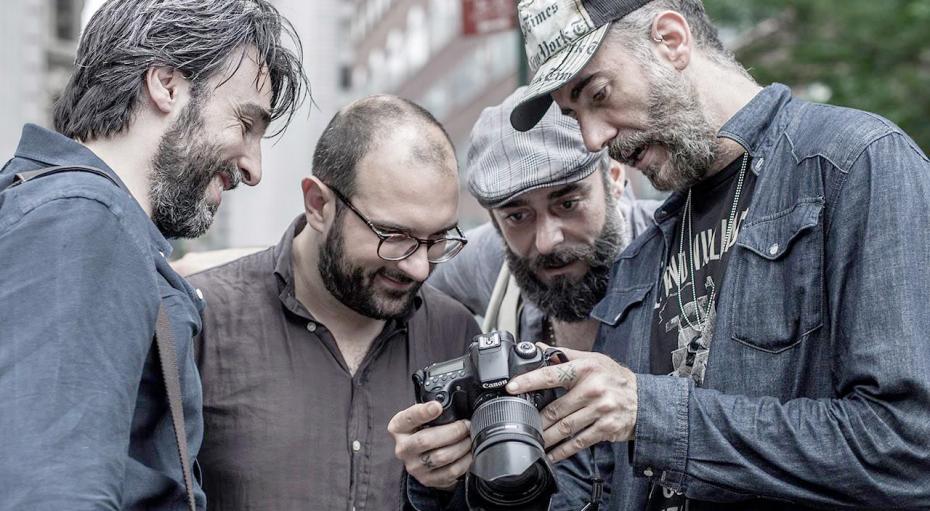A Milan-New York ‘chat’ was enough to rediscover the marvel of being Italian. On the other end of the telephone was Alexo Wandael, Trentino Alto Adige born but New Yorker by adoption, a former architect, now a professional photographer who boasts names of excellence through publications and portraits.
In the Big Apple it is 11 a.m., in the Milan-da-bere (Milan to drink, a journalistic slogan defining Milan of the 1980s) it is already afternoon. The reason for the chat is about our nationality, or rather, a project that wants to be a tribute to the Italian style. “Italiany” is a photographic studio created and developed by Wandael, which aims to document and portray the journey of Italians, born and raised in the Bel Paese or the beautiful country of Italy but who later move to New York and to the States.
The first narrative sequences of this collection are captured in January 2014 and as early as September of that same year, comes the first big event: an exhibition. From this moment on, the real adventure begins. The Casa Italiana Zerilli-Marimò, a cultural organization associated with New York University, becomes the first sponsor to believe in the artistic project by providing the location for photo galleries. Today, “Italiany” holds a good 123 portraits and exhibitions not only in New York but also in Miami and Los Angeles.

Alex Wandael with the Sardinian showgirl Elisabetta Canalis who lives in L.A.
“Italiany” is not only an iconographic living room, but a real artistic experiment that forms a new language from the stage of its creative development and, consequently, in its ability to communicate with the public.
Yes, in this perspective “Italiany” shines for its authenticity. After ten years as an architect, I started working as a photographer in fashion, which is why I am used to working with professional models. For “Italiany”, I meet completely different people, from age, sex, profession, personality. It is important to create a harmony between the photographer and the subject. That is the skill. In order to put them at ease and to create that magic between the lens and the person being portrayed, I like to talk to them, to get to know them a bit thus rending them an active part of the creation of the photo shoot. I get them involved by making them choose the location and the clothes for the shoot. This allows me to fully understand where the Italian character meets up with an environment which is so distant and so different.
It is precisely in this that the essence of the project lies: to be the manifestation of the adaptability of us Italians, without betraying our individuality, taking along with us our baggage of customs and traditions.
I want to observe the manner in which we have been able to combine this Italian character with the new lives that we have made for ourselves far from home. Many ask me if there are similarities with “Humans of New York”. It is not so. Not only because of the concept linked to Italy, but also because we set the stage for a truly professional photo shoot enriched by the creative participation of the photographic protagonists. This is where our originality lies.

All the portraits are in black and white. Why this choice of style?
Personally, I am a big black and white lover. Also, the black and white removes from the photograph the normal wear and tear of time. They become icons. They could have been taken at any moment in time, in any year. This allows for the portraits to become immortal.
All the shots are accompanied by a brief interview. You are the only photographer of “Italiany”, but you are supported by a team. How do you choose whom to meet, whom to get to know, and whom to immortalize?
Actually, it all started in a rather casual manner. Let’s say there was a sort of a domino effect. At first I was convinced that I would meet all the Italians in New York, but then I learned it was not so. Anytime we met someone and we decided that we would photograph them, we asked about other Italians who might be available to be photographed. It was really just by word of mouth.
Among all those you have met, who impressed you the most?
Throughout all of my work, issue #85 is my favorite. The protagonist of this portrait, unfortunately, is no longer with us. His name was Piero Resta. He was an artist. With him we took pictures in Hawaii. I remember it as an amazing experience. His energy, the way he moved, the way he did things. I will carry that image of him with me always.

The photographs of “Italiany” have been shown in exhibitions in New York, Miami, and Los Angeles. Is there a possibility they will go to Italy?
The exhibitions have had very positive feedback and in this moment there is a project in the works that we are discussing with the Italian Embassy, but nothing has yet been determined. Let’s say that it is definitely something in the making and we would like this image of Italian society to our countries well.
Our mission does not end only with speaking about Italian talents in the United States, but also with talking about them to those same Italians.
The brain drain phenomenon at this moment, is hitting Italy hard. Many are the talented who wish to leave their country in search of opportunities abroad. What would your advice be for these Italian talents?
Today it is definitely important to look abroad, also through the cultural exchange programs offered by universities. Introducing yourself to the idea of going abroad, to understanding it, experiencing it, is critical. I believe, however, that no Italian ever really wants to go away from or leave Italy.
Personally I dream of one day when all of our talents can come back, but for now it is difficult to decide to do it, especially because of the perception from abroad, that our country is not doing anything to encourage this return to the homeland.
Is it still a blessing to be born Italian?
Absolutely! We have an incredible cultural background. Unfortunately, though, there is no acknowledgement in the work field but we Italians inevitably absorb the beauty, and this allows us to be successful and bring forth our talents. We have an incomparable artistic and historical expertise. Nobody in the world can surpass the cultural depth of the Italians because no one has lived our history, our art.






























